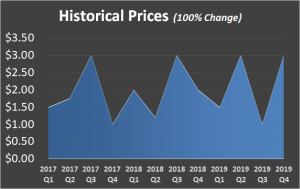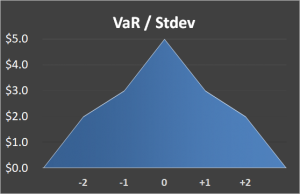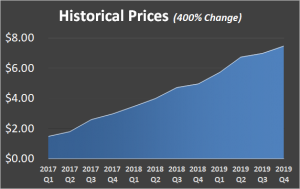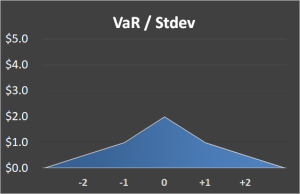Fluor’s Yoder on FX risk for multi-national corporates

Foreign currency (“FX”) continues to be a hot topic in the media and one of the core treasury functions regularly discussed by CFOs on earnings calls. So how should treasurers be thinking about FX, and what are some best practices for managing FX risks and opportunities? EuroFinance spoke to Todd Yoder, Global Director of Treasury at Fluor Corporation.
FX continues to be a hot topic in the media, what do you think is driving this?
FX continues to be a core financial risk for multi-national corporations (MNCs), and as they become more global the impacts can no longer be ignored. The FX related headlines and the five minute sound bites people hear and read about in the media generally focus on geopolitical events, the carry trade, and how the U.S. dollar is performing against other currencies or currency baskets, but there is a lot more to the story. When the media does cover FX impacts on MNCs they say things like “FX headwinds” or “FX tailwinds,” which is really referring to the FX impacts from the translation of financial statements in consolidation. It would certainly be more germane if they were to delve a bit more into how FX rate fluctuations impact companies’ financial results, cash flow, liquidity planning, and how some of these impacts are accounting noise and not economic impacts at all. The real story of FX impacts and strategy at MNCs is more multifaceted.
How is FX risk management different now given the current market uncertainty?
For a treasury to run a best practices risk strategy shop, they need to have a comprehensive understanding of how FX rate fluctuations impact their specific business. Regardless of the business you are in, optimal FX strategies begin during strategic planning and on into the forecasted transactions, non-functional transactions, remeasurement of non-functional monetary assets and liabilities, non-functional cash flows all the way through to the translation in the consolidation of non-reporting currency financial statements. One important piece is understanding when forecasted FX transactions will impact the P&L and when it will impact actual cash flow and if there is a material difference between P&L recognition and the actual cash flow. Companies that focus on the balance sheet exposures alone can end up fixing an accounting concern, but creating an economic risk without realizing it, which can be very dangerous.
With analysts and investors continuing to ask MNCs more FX related questions, how has this changed treasury?

Companies need to be in touch with what their investors want. I still struggle to get comfortable with a business that has a hedging strategy focusing on earnings volatility from remeasurement while creating economic risk, and justifying it with the notion that they are doing what investors want. This approach is very different from a company that does not hedge certain exposures because it is truly want investors want, an example might be an oil company that does not hedge because investors want that exposure as part of a larger portfolio of exposures. Academically there are ways to protect the P&L, Balance Sheet and the translation, operationally it may come at a higher cost and not align with the company’s core FX strategy if economic impacts are first priority.
Having managed FX at manufacturing, services and project-based companies, are there different approaches you would recommend?
There isn’t a one size fits all with regards to managing FX. The type of business, how sticky pricing is and how competitors manage FX are some of the many considerations when developing an optimal hedging strategy. A manufacturer, project-based, and services business might all have different approaches to FX strategy. As an example, airlines pricing has high elasticity, so what their competitors are doing can have a more significant short-term impact while businesses with stickier pricing can smooth out FX impacts with layering strategies. Project-based companies typically look at hedging strategies that protect profitability of each specific project in addition to the enterprise itself, and not focus so much on layering strategies and hedging against annual plan FX rates. I focus first on the FX impacts that will ultimately impact the company’s cash flow and have an economic impact on the business. Cash has always been and will always be what makes or breaks a company.
We still see companies that report significant impacts from FX, why do you think this is the case?
It still shocks me how some companies continue to run a policy-driven “if, then” hedging that dictates their FX strategies with broad brushstrokes focusing on percentages hedged without even quantifying the risk. This approach can lead to bad hedges or unfavorable outcomes and leave them scratching their heads.
Treasury should have an advanced understanding of statistical applications to assess FX risk. If you do not have a best practice approach to quantifying risks it is not possible to develop an optimal risk mitigation strategy and take advantage of opportunities.
Is value-at-risk still the best way for companies to quantify risk?
VaR deterministic modeling based using volatility to calculate VaR is still the most common approach to measuring risk, but shouldn’t be the only approach used. If you are using the methodology to calculate a normal distribution (Gaussian distribution), a couple warnings about VaR are in order. For a start, it can give a false sense of security and can be very misleading; as an example, if a currency is devaluing against your base currency slowly and steadily over a period of time it may have a very low VaR and not accurately reflect the risk you have given an extended duration. I have a simple illustration of this in the charts below showing how small one directional price changes over a period of time can result in a low VaR, but have a significant price change over that same period of time. If you come across situations like this I would recommend looking at momentum, do some scenario modeling and utilize stochastic volatility (SV) modeling to add some randomness.
 |
 |
 |
 |
What are some other approaches treasury can use to look at quantifying FX risk?
I do not see it used in treasury, but I like Conditional value at risk (CVaR) a derivative of VaR models that provides insight into the tail risk and can be more appropriate than VaR alone in certain cases.
Cash Flow at Risk (CFaR) is the same as VaR except you are applying the risk numbers to your forecasted cash flows. To take these tools to the next level treasury can calculate the CFaR considering the correlation benefit of your portfolio of cash flow exposures. Treasury should consider component VaR, but also look at the diversification benefit. Most will remember this concept from graduate school and credit goes to Harry Markowitz, who won a Nobel Prize for his work on portfolio theory. Include in your model the favorable/(unfavorable) impacts of carry to arrive at the FX risk efficient frontier and determine how much risk you can take out and what the carry impact will be at different points on the curve.
We are beginning to hear more about earnings-at-risk (EaR), how does this align with CFaR ?
EaR takes CFaR a step further and includes the impacts from taking those cash flows at risk back to the Parent Co to measure potential impacts to the P&L in consolidation – especially important for companies that report earnings with and without FX impacts (earnings on a constant currency basis). If EaR is a priority for a company and they do it well, it will not necessarily be reflected in both revenue and expenses, but in earnings per share on a constant currency basis. Companies focused on EaR hedging should also consider their repatriation strategy.
We are also seeing more discussion on FX pricing and liquidity, have you seen any changes?
Derivative legislation has changed the landscape, with certain liquidity providers (LPs) able to make a market for corporate clients, but required to lay off a lot of the risk in their book that they may have kept in the past when proprietary trading was less regulated. While there is regulation of the risk the banks hold, there are still differences in the methodologies used by the banks to value their risk and credit risk can be a material component. I have definitely seen changes in the number of banks trading as an agent versus trading as principal, which has provided a good opportunities for nontraditional LPs. This is a topic I enjoy a lot, having traded many illiquid currencies. Knowing how to trade into positions and trade out of positions and using the right tools can mean millions of dollars to a business. We could have a lengthy discussion just on liquidity and trading strategy considerations for MNC treasury, but we can save that for another time.
Todd Yoder is director of global corporate treasury at Fluor Corporation, one of the world’s largest engineering, procurement, fabrication, construction and maintenance (EPFCM) companies headquartered in the US.